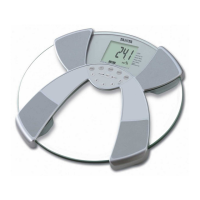
Do you have a question about the Tanita INNER SCAN BC-532 and is the answer not in the manual?
| Type | Body Composition Monitor |
|---|---|
| Model | BC-532 |
| Technology | Bioelectrical Impedance Analysis (BIA) |
| Weight Capacity | 150 kg / 330 lb |
| Weight Increment | 0.1 kg / 0.2 lb |
| Body Fat Percentage | Yes |
| Body Fat Percentage Range | 5% - 60% |
| Body Water Percentage | Yes |
| Muscle Mass | Yes |
| Bone Mass | Yes |
| Visceral Fat Rating | Yes |
| Visceral Fat Rating Range | 1 - 59 |
| Metabolic Age | Yes |
| Basal Metabolic Rate (BMR) | Yes |
| Memory Function | Yes |
| Recall Function | Yes |
| User Profiles | 4 |
| Display Type | LCD |
| Power Source | 4 x AAA batteries |
| Auto Power Off | Yes |
| Dimensions | 300 x 300 x 30 mm |
Important safety warnings regarding the use of the body composition monitor, especially for individuals with medical implants.
Instructions on how to correctly insert AA batteries into the device for operation.
Guidance on placing the measuring platform on a stable, flat surface for accurate readings.
Care instructions for maintaining the precision instrument and ensuring its longevity.
Steps to activate the unit and begin the personal data programming sequence.
Procedure to choose a user profile number for storing personal information.
Instructions for inputting the user's age, which affects measurement calculations.
How to select the gender or athlete setting for accurate body composition analysis.
Guidance on entering the user's height for precise measurement calculations.
Steps to select a user profile and correctly position oneself on the platform to start a reading.
How to interpret the displayed weight, body fat percentage, and other metrics.
Instructions for using the scale to measure only body weight.
Resolving issues where the weight unit (kg, lb, st-lb) is displayed incorrectly.
Addressing 'Lo' display indicating low batteries or potential data loss.
Troubleshooting 'Error' messages caused by movement or exceeding measurement limits.
Resolving issues where body fat percentage is not displayed, possibly due to unprogrammed data.
Understanding the 'OL' indicator, which signifies exceeding the scale's weight capacity.
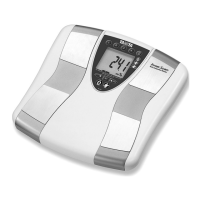
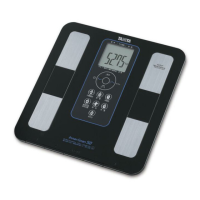
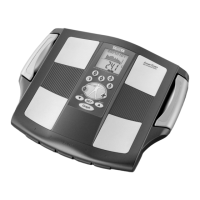
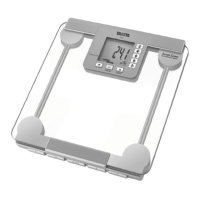

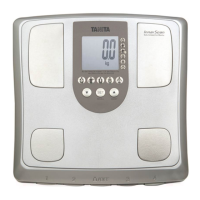
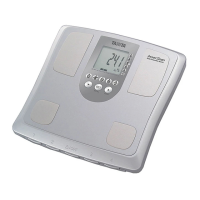

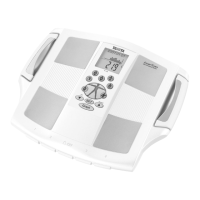
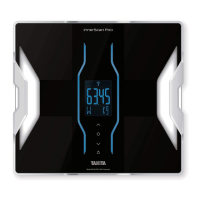
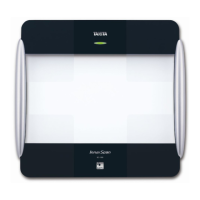
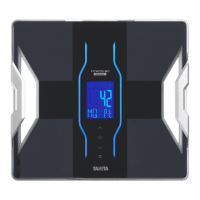
